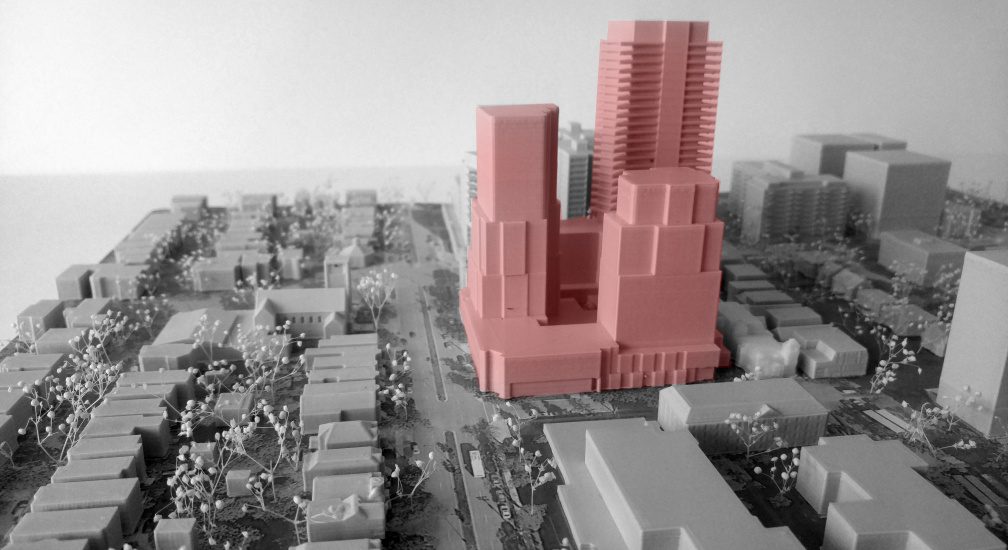
KJIPUKTUK (Halifax) – Peggy Cameron, VP of Black River Wind Ltd, and an environmental consultant with a Masters in Environmental Studies, has been critical of the kinds of new development that city council and the planning department are so enthusiastically endorsing. Rather than high-rises that blemish the cityscape and shrink the affordable housing stock, why not consider repurposing existing large buildings and focus on more modest infills and mid-rise developments in Halifax’s older neighborhoods in terms of new development?
New development tends to start with the tearing down of existing buildings. I spoke with Cameron about the city’s problematic demolition approvals, their impact on climate change and affordable housing, and the reluctance of city councillors to make things better.
What’s wrong with the city’s demolition process?
In terms of jurisdiction the city only looks at things from a safety perspective. We would like the city to follow the lead in other jurisdictions. For example, in Toronto, when a building with six affordable units is torn down, then those units would have to be replaced in the new build, so that those six affordable housing units are retained within that community.
Another example would be relating to climate change. HRM recently released their HaliFACT report, however the Centre Plan does little to nothing to address climate change despite submissions by the public.
About a year ago architects in countries all around the world initiated Architects Declare. One of its goals is to ensure that upgrading existing buildings and extending their use is much more carbon efficient than demolition. 39% of energy related CO2 emissions come from construction and building, most of that is related to the upfront costs of new building materials like glass, steel and concrete, which are hugely energy intensive. These architects said, it’s better to repurpose and retrofit existing buildings than to build new buildings.
Those are the kinds of stipulations that the city could be looking at. The city’s fallback is to say, oh, we can’t do that. It’s not within our role and the province won’t let us. There’s no indication that the city has gone to the province and asked for these specific changes to the municipal charter that would allow them to pursue different ways of doing things.
Friends of Halifax Common made a submission to Law Amendments in 2014 to talk about some of the specifics the city could introduce to give a developer a demolition permit. That would have been an opportunity for the city to say yes, these are good ideas. In fact, the city generally shuts out commentary from citizens. They have their own agenda, and it seems that they don’t want to seriously engage in dealing with the issue of affordable housing, or climate change.
Buildings that are flagged to be demolished sometimes sit empty for months and years. Is that an issue as well?
That’s definitely a concern. The city is its own best example of being a negligent property owner. We could look at St. Pat’s Alexander, the Queen Elizabeth High School, St. Pat’s High School, and now we have the situation with Bloomfield and the old central library. These are all examples of where the city could have taken the initiative to continue their use for community purposes.
The city really has a long term opportunity to ask, how can we continue the function that these buildings had, and serve it in a different way? It could be for affordable housing. We could have art spaces, we could have small business incubators, we could have many kinds of services, seniors complexes, we could have seniors clubs. But the city says that the only option is to tear the building down and sell the property.
And even in the case where they’ve torn the building down, as in the case of St. Pat’s High School. There was a petition with almost 1000 signatures to have that site be the location for the new Common Roots urban farm. There was never any initiative or never any leadership or never any vision on the part of any of the councillors to see the value of that property for future citizen use, other than to cash in by selling it to a developer.
In a way all this ties into my first comment. If developers knew that they couldn’t just tear properties down, then there would be no incentive to let them fall into disrepair. Developers know that in this city they can play Monopoly. They’ll accumulate adjoining properties and then eventually they’ll do a block consolidation. And then they’ll either do a development agreement themselves, or they’ll flip it to a developer and it is just a moneymaker.
Meanwhile the city allows developers to destroy hundreds of affordable housing units. These developers are basically nibbling away at neighborhoods where often before there were affordable rental properties. After they’re torn down, these developers are definitely not going to be catering to the same clientele.
See also: Imagine Bloomfield: Lament for a great idea
With a special thanks to our generous donors who make publication of the Nova Scotia Advocate possible.
Subscribe to the Nova Scotia Advocate weekly digest and never miss an article again. It’s free!



